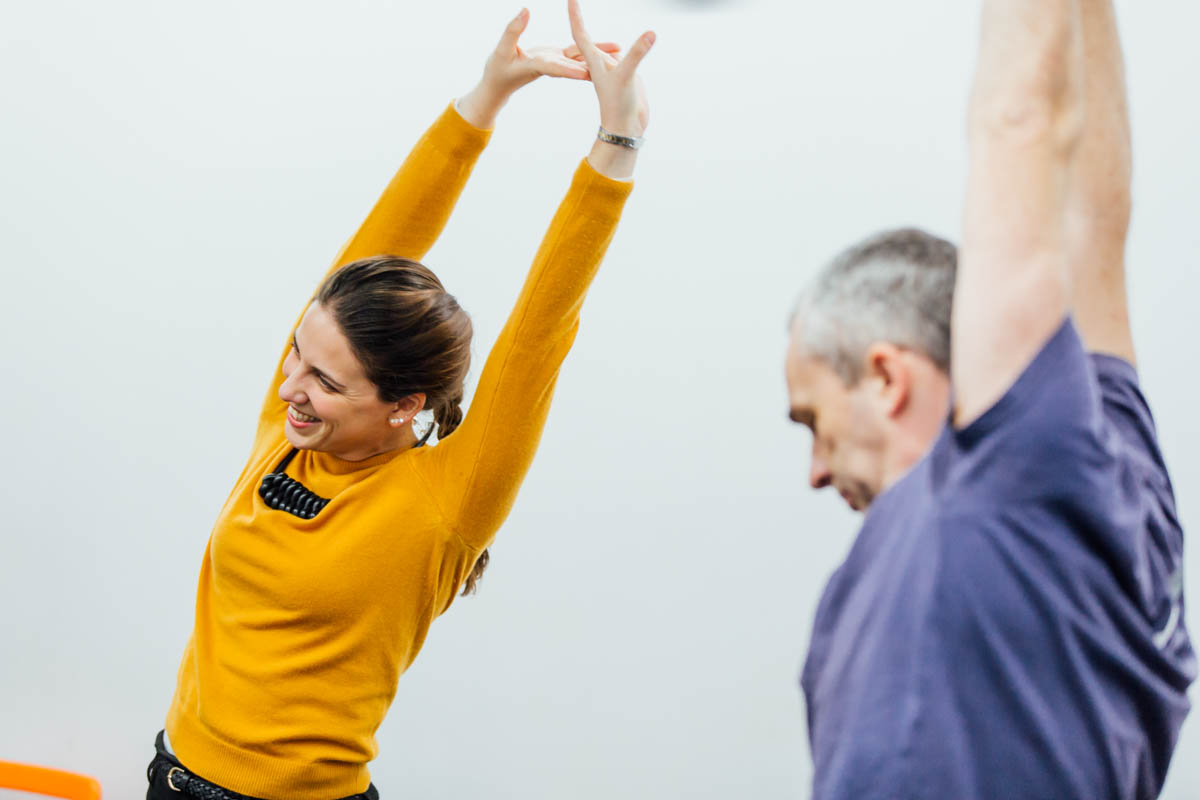Just like dancers and athletes, it’s important that we warm up as singers to avoid damaging our vocal cords. It also means that we can perform to the best of our ability. Our vocal cords and larynx (also known as the voice box) gets a lot of focus, but the rest of our bodies are equally important. We’re going to go through some quick points on why we do vocal warm ups and how to do it safely, so that you can continue singing to your heart’s delight.
Why Do You need to Warm Up?
Before we start singing we want to warm up and stretch our muscles to avoid any unwanted tension. We also want to find our ideal singing posture. As singers our entire body is essentially our instrument. Just like a flutist will warm up their instrument by blowing hot air into the mouthpiece, we warm up our muscles. Just like a drummer places each part of their drum kit in the optimal distance for hitting them accurately, we align our body posture.
How Do You Get Rid of Unwanted Tension?
From traffic jams to bills, emotional stress and just busy lives, there’s a lot causing us stress and affecting our muscles. Although tension can sit in any muscle in the body it has it’s favourite spots to hang out: Our neck, shoulders, jaw, the root of our tongue and our core.
Here’s a few exercises to start your warm up and get rid of tension:
- Give yourself a massage, one side at a time. Start kneading your right shoulder with your left arm and work your way down the full length of the right arm. Then swap.
- With the palm of your hands, massage the back of your neck until it feels nice and supple.
- Use both your hands and knead your face like a bread dough, pay extra attention to your jawline and temples.
- Curl up your index finger and use the knuckle to find the route of your tongue - it is located under your chin. If you feel resistance when wriggling your tongue about you have found the spot! Massage with a relatively fast pace and light pressure. Feel free to phonate gently on a vowel (it will sound like a bumpy bus ride!).
- Gently put your head to one side and let your hand rest on top (don’t pull, just let it rest there) and feel a nice stretch on the side of your neck. Repeat on the other side.

Finding Your Singing Posture
When singing, we want our bodies to be soft and supple. A soft body is less likely to carry tension and gives you a firm grounding. Soft doesn’t mean slouching though - we want a straight back and open chest.
Try the following to get into your singing posture:
- Reach your arms over your head and stretch. Then gently fold at the hips until your hands are as close to the floor as they naturally go (you might have done this in Yoga class).
- Make sure your knees are soft - bob gently up and down a couple of times to ensure they’re not stiff or locked.
- Take a breath from your diaphragm (imagine your belly filling with air like a balloon)
- Breathe out slowly (try it on an sss or fff sound) and start to rise, stacking your vertebrates. Try doing this against a wall, and imagine your back slowly rolling towards it, making contact bit by bit.
You should now be in your optimal singing position
P.s. If you at any point notice that you’re starting to tense your shoulders, lift them up towards your ears and let them fall back down again. They’re likely to settle a little lower and a little further back than they were before.
Warming Up Your Vocal Cords
You’re now finally ready to start focusing on your voice. We have muscles that control the closing of our vocal chords, so these need to be warmed up too! As with the rest of our body, we want to ease our voice into our singing session. That's why it’s best to start with exercises where it’s easy for our voice to travel through its range freely:
- Lip trills are always a great way to warm up. Breathe in with your diaphragm and press your lips gently together on the exhale. If you’ve never done lip trills before you might have to play around with the air pressure and how tightly/loosely you press your lips. It will look and sound like a toddler making car sounds. You can do this exercise with scales or just sweep around your vocal range. If you find it tricky to do, try placing your index fingers on either cheek
- Sirens are another excellent vocal warm-up. Phonating on a vowel - E is usually the easiest vowel - start from the bottom of your vocal range and glide up until it hits a natural ceiling (don’t push your voice). Don’t pull your chest voice up, just let your voice glide up and into head voice. Once you hit the top, glide back down again.
As you do the siren exercise a few times, you might notice that you keep missing out a few notes in the same area, or that it’s easier to go up than down. Try slowing down the gliding motion and keep it at this pace until you feel confident going through your range both up and down.

And there you have it! A quick guide to a safe vocal warm up. You may want to do additional exercises your teacher has given you or scales. Warm-ups can feel different every day, and some days one area will require more attention than others. Listen to your body and your voice to tailor your warm up routine.
City Academy run singing lessons across London - learn to sing, develop your voice and perform with classes in:

1. Start with: Singing Lessons - Beginners or Singing Foundation
2. Then: Pop & Rock Singing, Blues & Gospel Singing, Musical Theatre Singing, Jazz & Soul Singing and Opera Singing
3. Perform in: one of our six choirs across London
4. Extras: write your own music in our Songwriting classes







